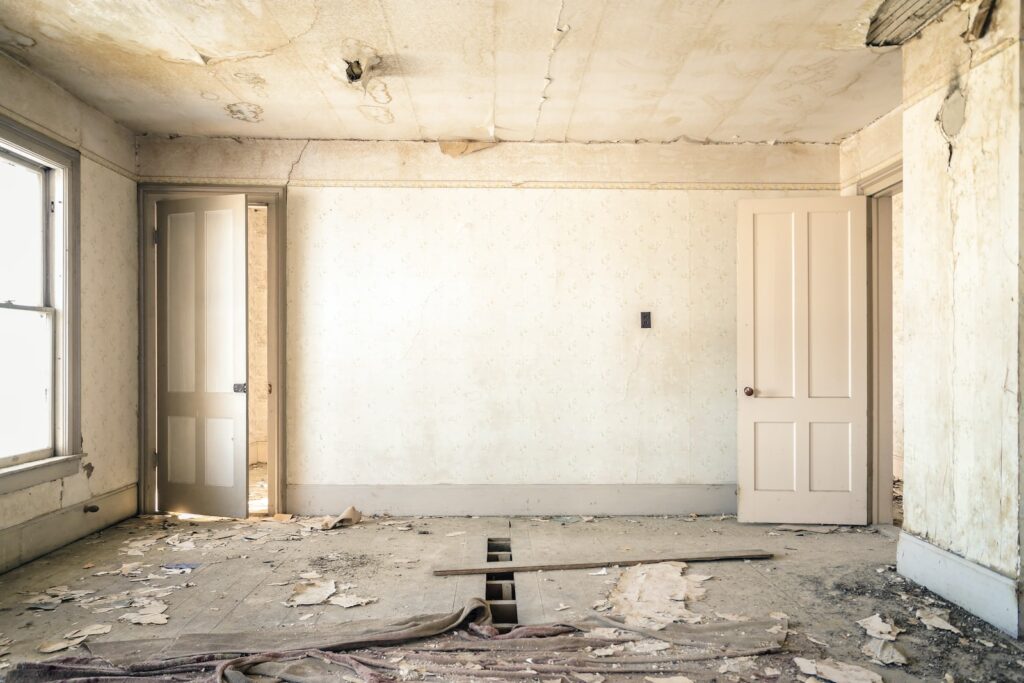Beginner’s Guide to Rehab Loans: What You Need to Know for Your Next Flip
Beginner’s Guide to Rehab Loans: What You Need to Know for Your Next Flip
As a real estate investor, you are always on the lookout for ways to improve your business. One option you may want to consider is a rehab loan. These loans can help you finance the purchase and renovation of a property, making it easier to flip and sell for a profit.
In this guide, we’ll take a closer look at what rehab loans are, how they work, and what you need to know to get started.
Benefits to using rehab loans
There are several benefits to using rehab loans for your real estate investments. Some of the most significant benefits include:
- Increased buying power: Rehab loans can help you purchase properties that you may not be able to afford with traditional financing.
- Funding for renovations: These loans provide funding for the renovation work needed to bring a property up to market standards, making it easier to sell for a profit.
- Short-term financing: Rehab loans are typically short-term loans, so you won’t be tied down to a long-term mortgage.
- Quick access to funds: These loans can often be funded quickly, allowing you to move quickly on a deal and secure a property before someone else does.

What Are Rehab Loans?
Rehab loans are a type of financing used to purchase and renovate properties. They are typically short-term loans, ranging from a few months to a year or more. These loans are designed to help investors and house flippers finance the purchase and renovation of a property, with the goal of selling it for a profit.
Rehab loans are also sometimes called fix and flip loans, as they are often used for this purpose. However, they can also be used for other types of real estate investments, such as buy and hold properties.
Types of rehab loans
There are several types of rehab loans available, each with their own set of requirements and benefits.
- FHA 203(k) Loans
- An FHA 203(k) loan is a type of rehab loan that is insured by the Federal Housing Administration (FHA). This loan is designed for properties that require extensive renovations and repairs. With an FHA 203(k) loan, borrowers can finance the purchase of the property as well as the cost of the renovations. The loan is based on the after-repair value of the property, which means that borrowers can borrow up to 110% of the projected value of the property after the renovations are complete.
- Fannie Mae HomeStyle Renovation Loans
- A Fannie Mae HomeStyle Renovation Loan is another type of rehab loan that can be used for both the purchase of a property and the cost of renovations. This loan is offered by Fannie Mae and is available for both primary residences and investment properties. The loan is based on the value of the property after the renovations are complete, and borrowers can borrow up to 95% of the projected value.
- VA Rehabilitation Loans
- VA Rehabilitation Loans are rehab loans that are offered to military veterans and their families. These loans are available for both the purchase of a property and the cost of renovations. The loan is based on the after-repair value of the property, and borrowers can borrow up to 100% of the projected value. VA Rehabilitation Loans have lower interest rates and more flexible underwriting requirements than traditional rehab loans.
- Private rehab loans
- Those are loans provided by private lenders to real estate investors or property owners for the purpose of rehabilitating or renovating a property. These loans are typically short-term, with repayment terms ranging from six months to three years, and they are secured by the property being renovated.
Qualifying and applying for rehab loans
Qualifying and applying for rehab loans may vary depending on the lender and the specific loan program. However, here are some general steps you can follow:
- Determine your project needs: Before applying for a rehab loan, you should have a clear understanding of the scope of your renovation project, the estimated cost of repairs, and the timeline for completing the project.
- Find a lender: Research private lenders or rehab loan programs that align with your project needs. You can search online or ask for recommendations from other real estate investors or professionals.
- Submit an application: Once you have identified a lender, you will need to submit an application, which typically includes information about your credit score, income, assets, and the property you plan to renovate. Some lenders may also require a down payment or collateral to secure the loan.
- Get approval: After reviewing your application, the lender will determine if you qualify for the loan and how much you can borrow. If you are approved, the lender will provide you with a loan offer, which includes the terms and conditions of the loan, such as interest rate, repayment period, and fees.
- Close the loan: If you accept the loan offer, you will need to sign a loan agreement and provide any additional documentation required by the lender. The lender will then fund the loan, and you can begin your renovation project.
It is important to note that the qualification and application process for rehab loans may vary among lenders, so it is important to carefully review the requirements and terms of each loan program before applying.
Rehab loans, also known as renovation loans, are a type of loan that can be used to finance the purchase and renovation of a property. These loans can be a great option for real estate investors looking to fix and flip houses.
Pros and cons of rehab loans
Pros:
- Financing for renovations: One of the biggest advantages of rehab loans is that they provide financing for the renovation of a property. This can be a huge benefit for real estate investors who may not have the cash on hand to fund the renovations themselves.
- Higher loan amounts: Rehab loans typically have higher loan amounts than traditional mortgage loans, which can allow investors to take on larger renovation projects.
- Faster turnaround time: Rehab loans often have a faster turnaround time than traditional mortgage loans, which can allow investors to purchase and renovate a property more quickly.
- Increased value of the property: By renovating a property, investors can increase its value and potentially earn a higher return on investment.
Cons:
- Higher interest rates: Rehab loans often come with higher interest rates than traditional mortgage loans, which can increase the cost of borrowing.
- Stricter qualification requirements: Rehab loans may have stricter qualification requirements than traditional mortgage loans, which can make it more difficult for some investors to qualify.
- Short repayment terms: Rehab loans typically have shorter repayment terms than traditional mortgage loans, which can make them more challenging to repay.
- Risk of over-improving: There is a risk that investors may over-improve a property with a rehab loan, which can lead to a lower return on investment.
Rehab loans can be a good option for financing a first fix and flip real estate project for several reasons. They provide investors with access to financing that they may not have otherwise. This is especially important for first-time real estate investors who may not have a lot of capital or a strong credit history.
Why you should start now
Rehab loans are a type of financing that are used by real estate investors to purchase and renovate properties. These loans are typically used for fix and flip properties, where an investor purchases a distressed property, renovates it, and then sells it for a profit.
By renovating a property, investors can increase its value and potentially earn a higher return on investment. This is especially important for first-time real estate investors who may be looking to build their portfolio and generate income. !Start today with your first fix and flip project with the help of a rehab loan!

